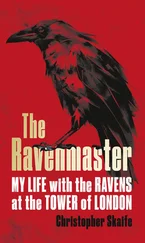And while Protestant reformers broke with Rome on a variety of counts, their treatment of their fellow human beings was no less disgraceful. Public executions were more popular than ever: heretics were still reduced to ash, scholars were tortured and killed for impertinent displays of reason, and fornicators were murdered without a qualm. The basic lesson to be drawn from all this was summed up nicely by Will Durant: “Intolerance is the natural concomitant of strong faith; tolerance grows only when faith loses certainty; certainty is murderous.”
There really seems to be very little to perplex us here. Burning people who are destined to burn for all time seems a small price to pay to protect the people you love from the same fate. Clearly, the common law marriage between reason and faith—wherein otherwise reasonable men and women can be motivated by the content of unreasonable beliefs—places society upon a slippery slope, with confusion and hypocrisy at its heights, and the torments of the inquisitor waiting below.
Witch and Jew
Historically, there have been two groups targeted by the church that deserve special mention. Witches are of particular interest in this context because their persecution required an extraordinary degree of credulity to get underway, for the simple reason that a confederacy of witches in medieval Europe seems never to have existed. There were no covens of pagan dissidents, meeting in secret, betrothed to Satan, abandoning themselves to the pleasures of group sex, cannibalism, and the casting of spells upon neighbors, crops, and cattle. It seems that such notions were the product of folklore, vivid dreams, and sheer confabulation—and confirmed by confessions elicited under the most gruesome torture. Anti-Semitism is of interest here, both for the scale of the injustice that it has wrought and for its explicitly theological roots. From the perspective of Christian teaching, Jews are even worse than run-of-the-mill heretics; they are heretics who explicitly repudiate the divinity of Jesus Christ.
While the stigmas applied to witches and Jews throughout Christendom shared curious similarities—both were often accused of the lively and improbable offense of murdering Christian infants and drinking their blood—their cases remain quite distinct. Witches, in all likelihood, did not even exist, and those murdered in their stead numbered perhaps 40,000 to 50,000 over three hundred years of persecution; Jews have lived side by side with Christians for nearly two millennia, fathered their religion, and for reasons that are no more substantial than those underlying the belief in the Resurrection, have been the objects of murderous intolerance since the first centuries after Christ.
The accounts of witch hunts resemble, in most respects, the more widespread persecution of heretics throughout the Inquisition: imprisonment on the basis of accusations alone, torture to extract confession, confessions deemed unacceptable until accomplices were named, death by slow fire, and the rounding up of the freshly accused. The following anecdote is typical:
In 1595, an old woman residing in a village near Constance, angry at not being invited to share the sports of the country people on a day of public rejoicing, was heard to mutter something to herself, and was afterwards seen to proceed through the fields towards a hill, where she was lost sight of. A violent thunderstorm arose about two hours afterwards, which wet the dancers to the skin, and did considerable damage to the plantations. This woman, suspected before of witchcraft, was seized and imprisoned, and accused of having raised the storm, by filling a hole with wine, and stirring it about with a stick. She was tortured till she confessed, and burned alive the next evening.
Though it is difficult to generalize about the many factors that conspired to make villagers rise up against their neighbors, it is obvious that belief in the existence of witches was the sine qua non of the phenomenon. But what was it, precisely, that people believed? They appear to have believed that their neighbors were having sex with the devil, enjoying nocturnal flights upon broomsticks, changing into cats and hares, and eating the flesh of other human beings. More important, they believed utterly in maleficium —that is, in the efficacy of harming others by occult means. Among the many disasters that could befall a person over the course of a short and difficult life, medieval Christians seemed especially concerned that a neighbor might cast a spell and thereby undermine their health or good fortune. Only the advent of science could successfully undercut such an idea, along with the fantastical displays of cruelty to which it gave rise. We must remember that it was not until the mid-nineteenth century that the germ theory of disease emerged, laying to rest much superstition about the causes of illness.
Occult beliefs of this sort are clearly an inheritance from our primitive, magic-minded ancestors. The Fore people of New Guinea, for instance, besides being enthusiastic cannibals, exacted a gruesome revenge upon suspected sorcerers:
Besides attending public meetings. Fore men also hunted down men they believed to be sorcerers and killed them in reprisal. The hunters used a specialized attack called tukabu against sorcerers: they ruptured their kidneys, crushed their genitals and broke their thigh bones with stone axes, bit into their necks and tore out their tracheas, jammed bamboo splinters into their veins to bleed them.
No doubt each of these gestures held metaphysical significance. This behavior seems to have been commonplace among the Fore at least until the 1960s. The horrible comedy or human ignorance achieves a rare moment of transparency here: the Fore were merely responding to an epidemic of kuru—a fatal spongiform infection of the brain—brought on not by sorcerers in their midst but by their own religious observance of eating the bodies and brains of their dead. Throughout the Middle Ages and the Renaissance, it was perfectly apparent that disease could be inflicted by demons and black magic. There are accounts of frail, old women charged with killing able-bodied men and breaking the necks of their horses—actions which they were made to confess under torture—and few people, it seems, found such accusations implausible. Even the relentless torture of the accused was given a perverse rationale: the devil, it was believed, made his charges insensible to pain, despite their cries for mercy. And so it was that, for centuries, men and women who were guilty of little more than being ugly, old, widowed, or mentally ill were convicted of impossible crimes and then murdered for God’s sake.
After nearly four hundred years some ecclesiastics began to appreciate how insane all this was. Consider the epiphany of Frederick Spee: “Torture fills our Germany with witches and unheard-of wickedness, and not only Germany but any nation that attempts it…. If all of us have not confessed ourselves witches, that is only because we have not all been tortured.” But Spee was led to this reasonable surmise only after a skeptical friend, the duke of Brunswick, had a woman suspected of witchcraft artfully tortured and interrogated in his presence. This poor woman testified that she had seen Spee himself on the Brocken, shape-shifting into a wolf, a goat, and other beasts and fathering numerous children by the assembled witches born with the heads of toads and the legs of spiders. Spee, lucky indeed to be in the company of a friend, and certain of his own innocence, immediately set to work on his Cautio Criminalis (1631), which detailed the injustice of witch trials.
Bertrand Russell observed, however, that not all reasonable men were as fortunate as Spee:
Some few bold rationalists ventured, even while the persecution was at its height, to doubt whether tempests, hail-storms, thunder and lightning were really caused by the machinations of women. Such men were shown no mercy. Thus towards the end of the sixteenth century Flade, Rector of the University of Treves, and Chief Judge of the Electoral Court, after condemning countless witches, began to think that perhaps their confessions were due to the desire to escape from the tortures of the rack, with the result that he showed unwillingness to convict. He was accused of having sold himself to Satan, and was subjected to the same tortures as he had inflicted upon others. Like them, he confessed his guilt, and in 1589 he was strangled and then burnt.
Читать дальше












